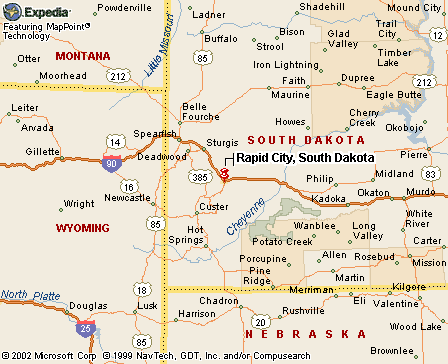|
|
Canku Ota |
|
|
(Many Paths) |
||
|
An Online Newsletter Celebrating Native America |
||
|
March 20, 2004 - Issue 109 |
||
|
|
||
|
Technology Serving as Bridge Between Cultures |
||
|
by Andrea J. Cook, Rapid
City Journal Staff Writer
|
||
|
Rattling Leaf, land and natural- resource developer for Sicangu Policy Institute at Sinte Gleska University in Mission, spoke Wednesday to students in Central High School's Lakolkiciyapi Room. Last summer, Sinte Gleska received a $5 million NASA grant to develop resource management systems and education tools. One product of the grant is a program called RezFinder, which Rattling Leaf demonstrated for the students. Using a satellite's topographic photo of Rosebud Indian Reservation, RezFinder displayed a parallel map of the same area. With the click of a computer button, Rattling Leaf expanded the satellite image to show a bird's eye view of a Rosebud community. "We can add sound," he said, giving the computer another command. Music from a Lakota drum group filled the classroom, and with another command, a Lakota speaker was heard. RezFinder is helping bridge generations on the reservation and preserve cultural awareness, Rattling Leaf said. The program has maps that show historical tribal boundaries. "We link language and songs to protect and preserve the language," he said. Rattling Leaf said it's important to get kids involved in what global information systems, or GIS, can do for them, and especially for American Indians. From satellite imagery to a hand-held global-positioning system and demographic information, GIS encompasses a multitude of information-gathering technologies. "GIS is relevant because it's about the land, and that's what defines us as a people," Rattling Leaf told the students. In the past, a tribe depended on scouts to gather reliable information that guided the people's decisions, he said. "They wanted the best information available," he said. Today, GIS can serve a similar purpose and provide information the tribe can use for economic development and management on the reservation, he said. "We use GIS demographic information to track our high rollers at the casino," he said. GIS is also used to manage the tribe's buffalo herd. "We're pushing GIS because it's land related," Rattling Leaf said. GIS is also interdisciplinary and involves other sciences, culture and business. Central geography teacher Valerie Johns said that Rattling Leaf's presentation was important because he illustrated the correlation between math and science. Using satellite photos, Rattling Leaf showed the students thermographic images of ocean currents, the heat generated by cultivated and noncultivated land, and storms forming on land and in the sea. Rattling Leaf emphasized that a fire burning in Africa affects climate in other parts of the world. Michelle Frye, the Rapid City School District's community partnership facilitator, coordinated Rattling Leaf's visit to the freshman classroom. "You're the ones who can make a difference," she told the students who heard Rattling Leaf's presentation. "Technology is creating huge boosts to information," Frye said. "And you're going to have to learn to use that information." Rattling Leaf said, "We're trying to build this culture for merging science and technology with our traditions." The goal is also to develop a new generation of leaders capable of making the connection between the technology and the land, he said. |
|
|
www.expedia.com |
|
|
||
|
|
||
| Canku Ota is a free Newsletter celebrating Native America, its traditions and accomplishments . We do not provide subscriber or visitor names to anyone. Some articles presented in Canku Ota may contain copyright material. We have received appropriate permissions for republishing any articles. Material appearing here is distributed without profit or monetary gain to those who have expressed an interest. This is in accordance with Title 17 U.S.C. Section 107. | ||
|
Canku Ota is a copyright © 2000, 2001, 2002, 2003, 2004 of Vicki Lockard and Paul Barry. |
||
 |
 |
|
|
The "Canku Ota - A Newsletter Celebrating Native America" web site and its design is the |
||
|
Copyright © 1999, 2000, 2001, 2002, 2003, 2004 of Paul C. Barry. |
||
|
All Rights Reserved. |
||
 RAPID
CITY - Global-satellite photos and global- positioning systems
are modern parallels to an American Indian scout seeking information
for his tribe, according to James Rattling Leaf.
RAPID
CITY - Global-satellite photos and global- positioning systems
are modern parallels to an American Indian scout seeking information
for his tribe, according to James Rattling Leaf. 